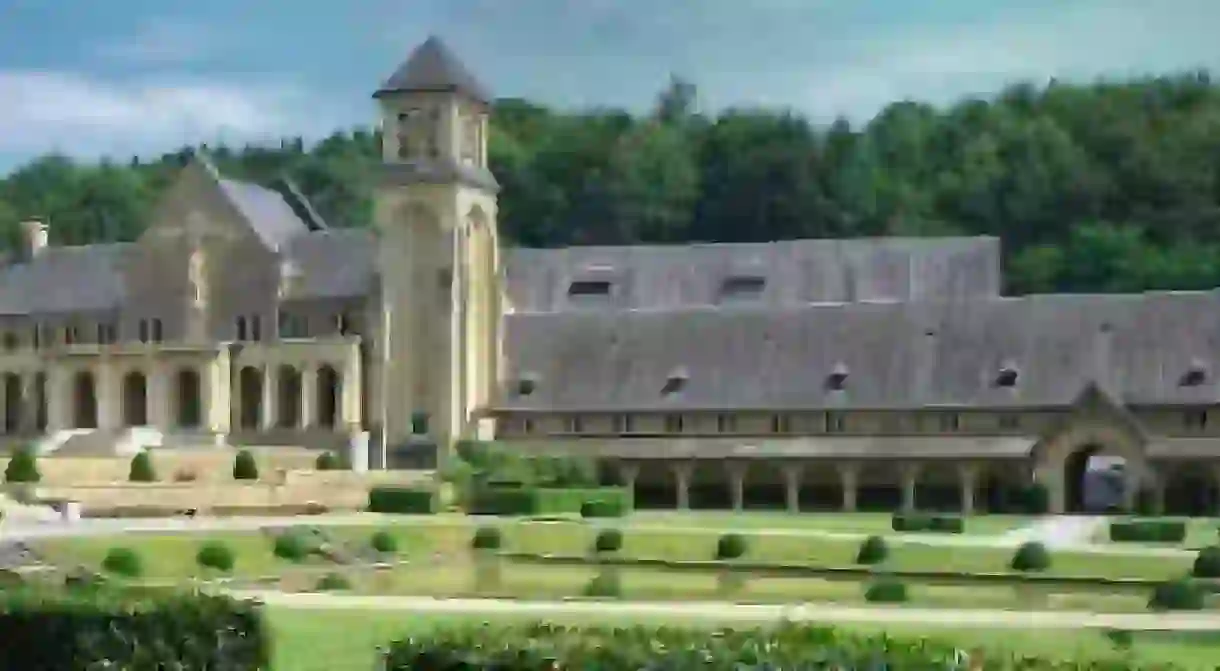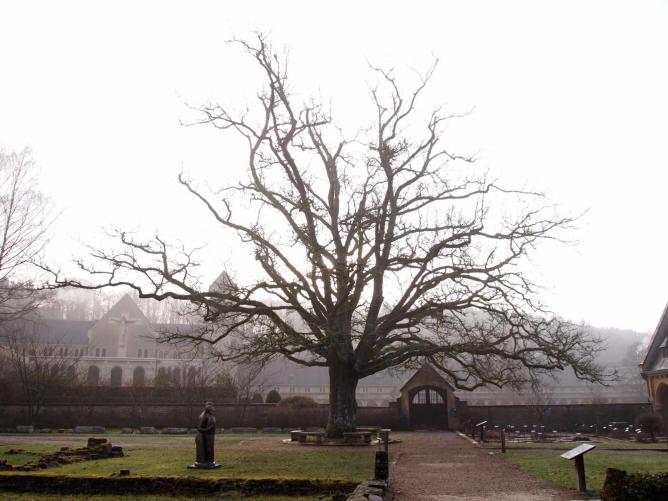Orval Abbey: A Tranquil Sojourn In Belgium's Trappist Traditions

Orval Abbey is located in a secluded corner of Wallonia, near the French border. Surrounded by forest, the Abbey is a spiritual island of tranquility and tradition, famous for its world-renowned brewery. The monastery also has a cheese factory, bakery and confectionery, supporting the monastic community in harmony with Cistercian regulations. The Abbey today is the product of centuries of ritual, peppered by drastic events, making Orval possibly Belgium’s most captivating Trappist monastery.

In medieval legend, the newly founded monastery of Orval was visited by Mathilde, the Countess of Tuscany, in 1076. Weary from her journey, she stopped at the nearby spring and with cupped hands drank the refreshing water, only to discover that she had lost her wedding ring in the river. Though she and her attendants searched, the ring could not be found. In desperation, the countess beseeched the Virgin Mary and at that moment a trout jumped from the spring with her ring in its mouth. In thanks, she exclaimed that this was truly the ‘valley of gold!’ (val d’or in French or, in some accounts, in Latin: aurea vallis) In appreciation of the legend, the emblem of Orval beer is a jumping trout with a gold ring in its mouth.

The long history of Orval is no less engaging. In 1070, the first community at Orval was started by Benedictine monks from southern Italy. This early group disappeared from the historical record and never completed the abbey. In the early 12th century, a chapel was finished at the site by regular clergymen from nearby Chiny. By 1132, the nascent monastery was incorporated into the Cistercian Order by the desire of the community. The Cistercian Reform movement of the 12th century sought to bring monastic communities back to a simple religious life and the success of the reforms was prevalent throughout Europe.

The medieval abbey of Orval was supported through land donations from individuals who sought the perpetual prayers of the community. Over time, their holdings included land abundant in iron; the subsequent mining projects gave the monastery the needed income to sustain its existence through several major calamities. Fires and warfare disrupted the peaceful routine of the monastery throughout the centuries. The final, most devastating of these misfortunes was in 1793, when the French Revolutionary army under General Loison, who was particularly fond of plundering, sacked the Abbey and set fire to the buildings. The Abbey was so completely destroyed that it was abandoned for over a century.

The rebirth of Orval in the 20th century is the poignant climax of its lengthy history. The Abbey had been used as a stone quarry till the ruins were considered for preservation by the Belgian government. However, the site was sold once again to the Cistercian Order and was soon under the designs of the architect Henry Vaes to make a new home for French monks seeking refuge in Belgium. Henry Vaes’s art deco design of the modern Abbey is beautifully haunting and in striking contrast to the medieval ruins. The first monks revived the religious life of Orval in 1927, and the community continues its religious traditions today.

The initial funding for the modern monastery at Orval was not sufficient for the completion of the designs, and thus in 1931, the brewery of Orval was born for the necessity of the monastic community. Beer, however, was probably brewed at the monastery from its beginnings. As self-reliant communities, monasteries viewed beer as an essential ingredient in their gastronomic routine. The world famous Orval beer that is available today in cafés was created by the first master brewer, who was a German named Pappenheimer, and though the brewing takes place within the monastery the process is run by secular employees.

Once the monastery was completed in 1948, the proceeds of the brewery were (and are still) used to benefit the local community. The monks live from the proceeds of their cheese, bread and confectionery products. Though the modern community follows the Cistercian rule, the monastery still controls the small scale production of the beer, and it focuses on quality rather than quantity. This is a hallmark of all the Trappist breweries (there are six in Belgium and 11 total), which take pride in their association and do little or no advertisement but rely on the quality of their beer. The brewery continues to use the spring water from the Fontaine de Mathilde but employs brewing methods that reflect its relatively modern start.

The medieval tradition of monastic hospitality is still practiced in the guesthouse operated by the Abbey. A guest has the option of dining with other guests, served by the monks in silence, and sharing traditional meals, often made with Orval beer or accompanied by Orval cheese. One beer is included with lunch and dinner, and the simple yet delicious meals are a glimpse into the medieval legacy of the monastery.

Additionally, the monastery has a modern museum in the undercroft of the main chapel, which has a decent collection of medieval artifacts and art from throughout Orval’s history. The oldest building within the monastery now has a refurbished, interactive exhibit about the brewery and details the complete process from the collecting of the spring water to the final fermentation in the bottle. The ruins and majority of the monastery is accessible to visitors, and a gift shop is located at the entrance. Throughout the monastery grounds, modern sculptures have been installed, the most eye-catching of which are in the herb garden.

A visit to Orval is a glimpse into history, where you can immerse yourself in the serene, introspective atmosphere or simply contemplate the Abbey’s long history over the amber libation that is rightly a revered name to beer lovers around the world. By James Radke













